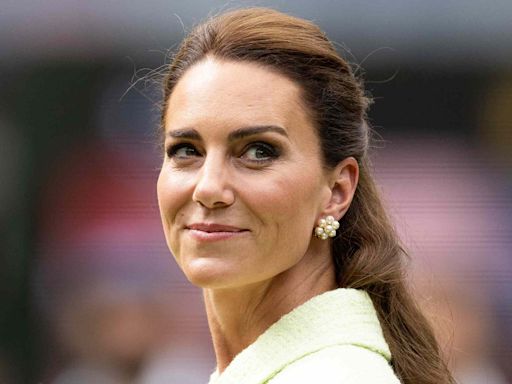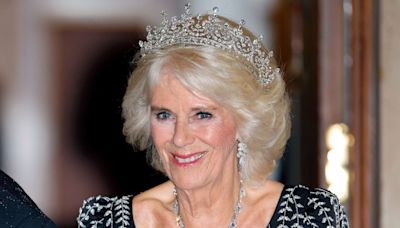Search results
Elizabeth I (7 September 1533 – 24 March 1603) was Queen of England and Ireland from 17 November 1558 until her death in 1603. She was the last monarch of the House of Tudor . Elizabeth was the only surviving child of Henry VIII and Anne Boleyn , his second wife, who was executed when Elizabeth was two years old.
Elizabeth II (Elizabeth Alexandra Mary; 21 April 1926 – 8 September 2022) was Queen of the United Kingdom and other Commonwealth realms from 6 February 1952 until her death in 2022. She was queen regnant of 32 sovereign states over the course of her lifetime and remained the monarch of 15 realms by the time of her death.
- Overview
- Childhood
- Position under Edward VI and Mary
•Queen Elizabeth I inherited several issues from the reign of her predecessor, Queen Mary I, including an unpopular war with France and the religious divisions that Mary’s campaign against Protestantism had left behind.
•The threat posed by the former subsided with the 1562 outbreak of the War of Religion in France, and Elizabeth responded to the latter by returning England to Protestantism and having Parliament formalize certain aspects of the Church of England’s doctrine.
•An issue that troubled her reign for its entirety was her lack of a husband and heir, a situation which she and others realized could potentially ignite a successional crisis upon her death. Still, she never married, perhaps because she preferred to keep power to herself.
•One of her biggest trials—at least in the foreign policy realm—came when Spain tried to invade England in 1588. The ensuing naval battle would go down as one of the most famous ones ever and ended with England’s defeat of the Spanish Armada, which had until then been supposed invincible.
Spanish Armada: Opening of the naval conflict
Read more about the defeat of the Spanish Armada.
Elizabeth’s early years were not auspicious. She was born at Greenwich Palace, the daughter of the Tudor king Henry VIII and his second wife, Anne Boleyn. Henry had defied the pope and broken England from the authority of the Roman Catholic Church in order to dissolve his marriage with his first wife, Catherine of Aragon, who had borne him a daughter, Mary. Since the king ardently hoped that Anne Boleyn would give birth to a male heir, regarded as key to stable dynastic succession, the birth of a second daughter was a bitter disappointment that dangerously weakened the new queen’s position. Before Elizabeth reached her third birthday, her father had her mother beheaded on charges of adultery and treason. Moreover, at Henry’s instigation, an act of Parliament declared his marriage with Anne Boleyn invalid from the beginning, thus making their daughter Elizabeth illegitimate, as Roman Catholics had all along claimed her to be. (Apparently, the king was undeterred by the logical inconsistency of simultaneously invalidating the marriage and accusing his wife of adultery.) The emotional impact of these events on the little girl, who had been brought up from infancy in a separate household at Hatfield, is not known; presumably, no one thought it worth recording. What was noted was her precocious seriousness; at six years old, it was admiringly observed, she had as much gravity as if she had been 40.
When in 1537 Henry’s third wife, Jane Seymour, gave birth to a son, Edward, Elizabeth receded still further into relative obscurity, but she was not neglected. Despite his capacity for monstrous cruelty, Henry VIII treated all his children with what contemporaries regarded as affection; Elizabeth was present at ceremonial occasions and was declared third in line to the throne. She spent much of the time with her half brother Edward and, from her 10th year onward, profited from the loving attention of her stepmother, Catherine Parr, the king’s sixth and last wife. Under a series of distinguished tutors, of whom the best known is the Cambridge humanist Roger Ascham, Elizabeth received the rigorous education normally reserved for male heirs, consisting of a course of studies centring on classical languages, history, rhetoric, and moral philosophy. “Her mind has no womanly weakness,” Ascham wrote with the unselfconscious sexism of the age, “her perseverance is equal to that of a man, and her memory long keeps what it quickly picks up.” In addition to Greek and Latin, she became fluent in French and Italian, attainments of which she was proud and which were in later years to serve her well in the conduct of diplomacy. Thus steeped in the secular learning of the Renaissance, the quick-witted and intellectually serious princess also studied theology, imbibing the tenets of English Protestantism in its formative period. Her association with the Reformation is critically important, for it shaped the future course of the nation, but it does not appear to have been a personal passion: observers noted the young princess’s fascination more with languages than with religious dogma.
Britannica Quiz
Tudor Period Quiz
With her father’s death in 1547 and the accession to the throne of her frail 10-year-old brother Edward, Elizabeth’s life took a perilous turn. Her guardian, the dowager queen Catherine Parr, almost immediately married Thomas Seymour, the lord high admiral. Handsome, ambitious, and discontented, Seymour began to scheme against his powerful older brother, Edward Seymour, protector of the realm during Edward VI’s minority. In January 1549, shortly after the death of Catherine Parr, Thomas Seymour was arrested for treason and accused of plotting to marry Elizabeth in order to rule the kingdom. Repeated interrogations of Elizabeth and her servants led to the charge that even when his wife was alive Seymour had on several occasions behaved in a flirtatious and overly familiar manner toward the young princess. Under humiliating close questioning and in some danger, Elizabeth was extraordinarily circumspect and poised. When she was told that Seymour had been beheaded, she betrayed no emotion.
The need for circumspection, self-control, and political acumen became even greater after the death of the Protestant Edward in 1553 and the accession of Elizabeth’s older half sister Mary, a religious zealot set on returning England, by force if necessary, to the Roman Catholic faith. This attempt, along with her unpopular marriage to the ardently Catholic king Philip II of Spain, aroused bitter Protestant opposition. In a charged atmosphere of treasonous rebellion and inquisitorial repression, Elizabeth’s life was in grave danger. For though, as her sister demanded, she conformed outwardly to official Catholic observance, she inevitably became the focus and the obvious beneficiary of plots to overthrow the government and restore Protestantism. Arrested and sent to the Tower of London after Sir Thomas Wyatt’s rebellion in January 1554, Elizabeth narrowly escaped her mother’s fate. Two months later, after extensive interrogation and spying had revealed no conclusive evidence of treason on her part, she was released from the Tower and placed in close custody for a year at Woodstock. The difficulty of her situation eased somewhat, though she was never far from suspicious scrutiny. Throughout the unhappy years of Mary’s childless reign, with its burning of Protestants and its military disasters, Elizabeth had continually to protest her innocence, affirm her unwavering loyalty, and proclaim her pious abhorrence of heresy. It was a sustained lesson in survival through self-discipline and the tactful manipulation of appearances.
Special offer for students! Check out our special academic rate and excel this spring semester!
Learn More
May 23, 2018 · Queen Elizabeth II served from 1952 to 2022 as reigning monarch of the United Kingdom (England, Wales, Scotland and Northern Ireland) and numerous other realms and territories, as well...
Sep 8, 2022 · LONDON — Queen Elizabeth II, Britain’s longest-serving monarch, whose broadly popular seven-decade reign survived tectonic shifts in her country’s post-imperial society and weathered...
Queen Elizabeth II's Life and Reign | The Royal Family. The Queen ruled for longer than any other Monarch in British history, becoming a much loved and respected figure across the globe. Over 70 years, Her Majesty was a dedicated Head of the Commonwealth, linking more than two billion people worldwide.






